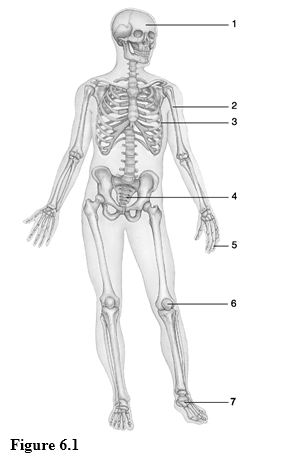Insoluble deposits that form within the urinary tract from calcium salts, magnesium salts, or uric acid are called kidney stones or renal
A) calculi.
B) plaque.
C) caries.
D) otoliths.
E) lithotrophs.
A
You might also like to view...
Using Figure 6.1, match the following bone types with the numbered structure:

A. Long
B. Short
C. Flat
D. Irregular
E. Sesamoid
1) Bone 1.
2) Bone 2.
3) Bone 3.
4) Bone 4.
5) Bone 5.
6) Bone 6.
7) Bone 7.
An increase in stroke volume ____________________ the cardiac output
Fill in the blank(s) with correct word
Negatively charged protein molecules are more prevalent within a neuron's cytosol than in the interstitial fluid.
Answer the following statement true (T) or false (F)
Most of these kinds of venous blood clots form deep in the body and occur in the lower leg or thigh. If a blood clot were to break loose it could cause a serious problem resulting in a stroke or heart attack. Name this disorder.